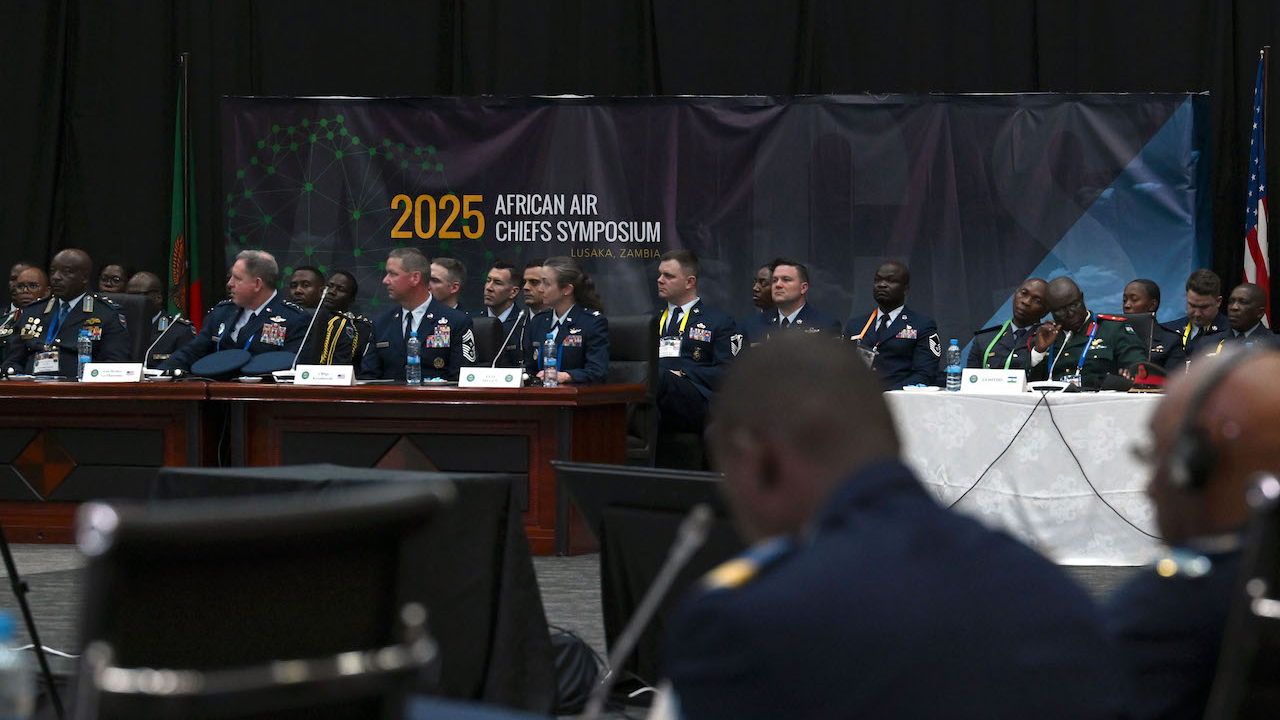Egypt gets extra bite with the ‘Nile Crocodile’
The Kamov Ka-52 ‘Nile Crocodile’ helicopter has officially entered service with the Egyptian Air Force. Jon Lake reports.

The Egyptian Ka-52 variant is an export derivative of the Kamov Ka-52 Alligator – known to NATO as the ‘Hokum-B’.
The Nile Crocodile name was apparently proposed by Dmitry Rogozin, the then Russian deputy prime minister in charge of the defence industry. It is not certain that the name has been officially adopted.
The Kamov Ka-52 announcement was made on December 6 during Egypt’s first International Defence Expo – EDEX 2018.
At least 12 Ka-52s were visible in satellite images of the airbase at Wadi al Jandali (Al Qatamiyah/Al Khatamia) published in late 2018, suggesting that the first Ka-52 squadron was by then in place. The airfield is the home of the 550th Attack Helicopter Brigade, whose 51st Squadron is equipped with the AH-64D Longbow Apache.
The Nile Crocodile may incorporate some features from the similar Ka-52K Katran (mud shark), a navalised derivative that was originally designed to operate from the two French Mistral-class amphibious assault ships ordered by Russia in 2010.
These vessels were subsequently embargoed in 2014 in the wake of Russia’s annexation of the Crimea. The ships were then sold to Egypt in 2015.
The Egyptian Ka-52 features updated avionics and a new cooling system and (like the Katran) does have a reinforced fuselage structure and some corrosion-resistant materials. However, it lacks the folding rotor-blades and folding wing seen on the Ka-52K prototypes.
In 2015, Egypt signed a deal for the purchase of 46 Ka-52 land-based helicopters for delivery between 2017 and 2020. In September 2016, Egypt and Russia signed an agreement under which an initial cadre of 30 Egyptian pilots and 70 groundcrew would be trained on the Ka-52 in Russia.
The first Ka-52 for Egypt initially flew in primer, but was first seen in desert camouflage at the Progress plant in Arsenyev in the Primorsk region of Russia in June 2017. The first three aircraft were delivered from the Progress in July 2017, and three more followed in August.
Russian Helicopters general manager, Andrei Boginsky, said that 15 Ka-52s would be delivered to Egypt by the end of 2017 and that the rest would follow over the next two years. Some reports suggest that 19 Ka-52s had been delivered by the end of December 2017.
But, while deliveries ran ahead of schedule, the Ka-52 experienced technical problems during its introduction to service. The engines reportedly lost power in different flight regimes, while there were also problems with the night vision and navigation systems and other avionics equipment.
It was reported that these problems lay behind the Egyptian decision to buy 10 AH-64E Apache Guardians.
Boginsky said that the company was planning urgent hardware and software upgrades to rectify deficiencies that had been found during combat testing in Syria and what was referred to as ‘real action’ in Egypt. These upgrades will centre on improvements to the electro-optical vision system and to the generators, which were identified as particular weaknesses.
Russian sources suggest that there is an additional requirement for further Ka-52s to fly from the Mistral-class ships. Russia’s TASS news agency said that Cairo had declined the offer of European or American helicopters to equip the two helicopter carriers, and that Russia had offered modern armament, electronic warfare and communications systems for the Mistrals, as well as the Ka-52K helicopter.
It has been reported that pre-contract work is under way on an export version of the Ka-52K Katran for Egypt, including finalisation of the helicopter’s “technical concept” and working on the financial aspects of the contract.
In late August 2018, Alexander Mikheyev, head of Russia’s state arms seller Rosoboronexport, said that the company would “soon” start talks on supplying Ka-52K helicopters to Egypt after the completion of other equipment deliveries for the Mistral-class helicopter carriers.
Stay up to date
Subscribe to the free Times Aerospace newsletter and receive the latest content every week. We'll never share your email address.

